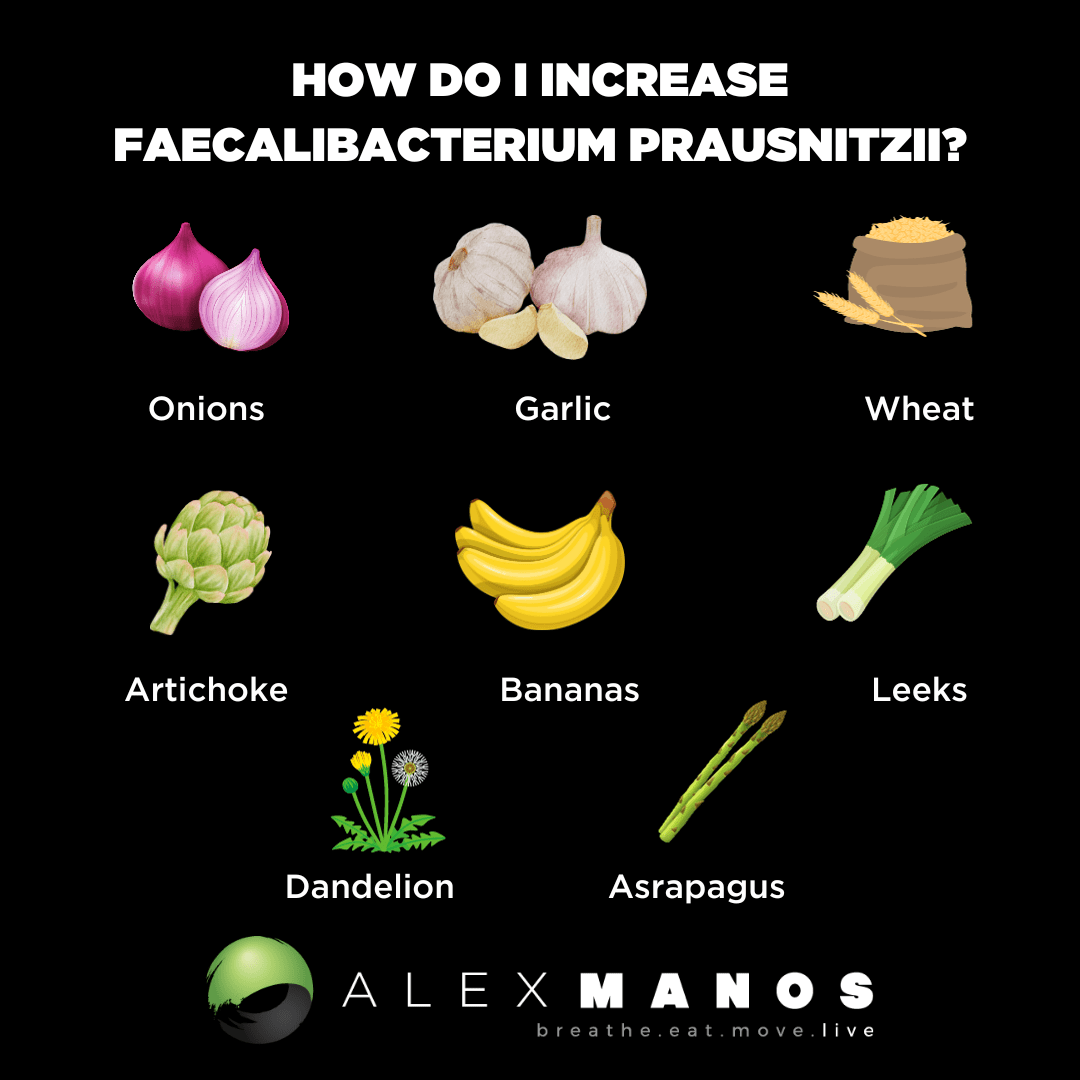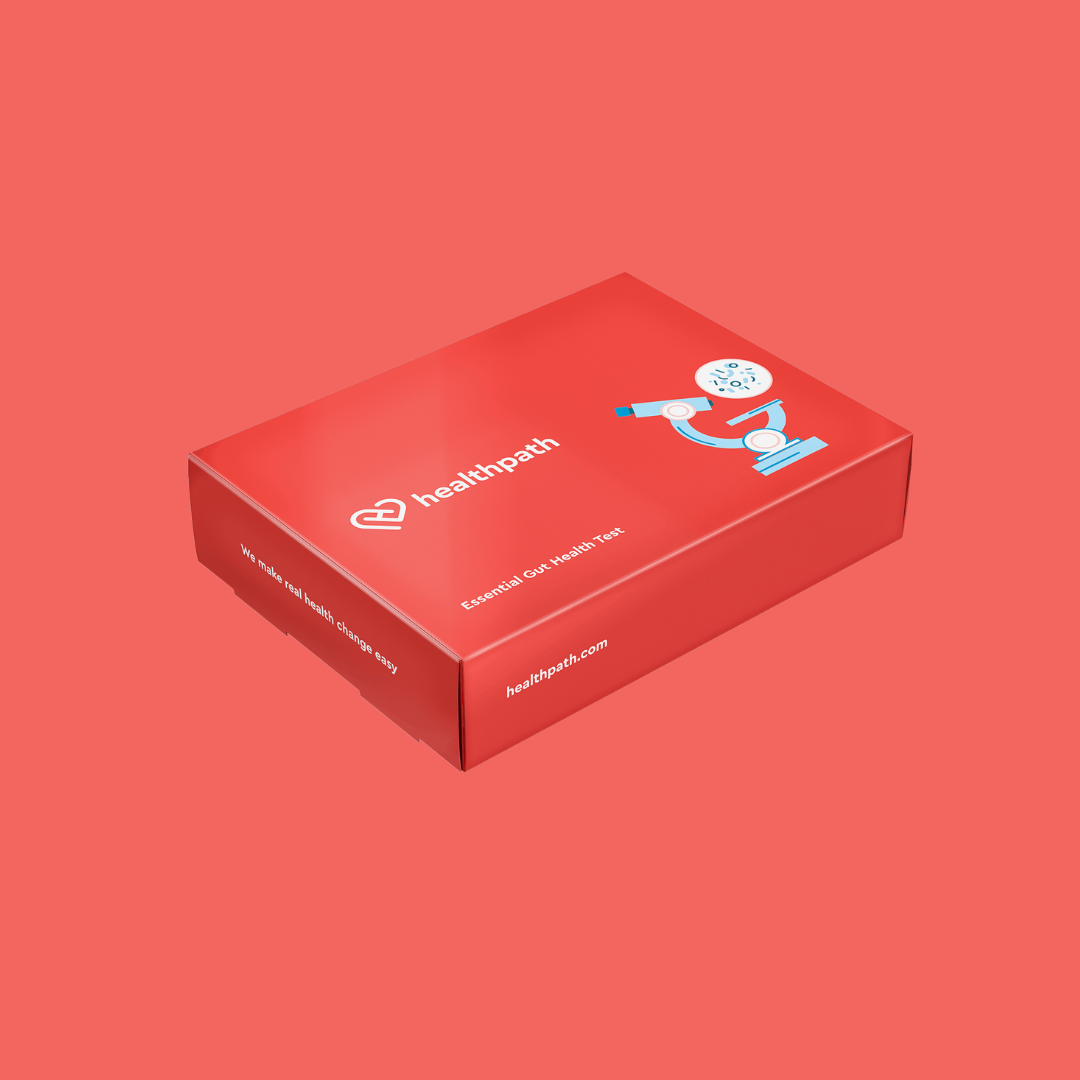Welcome to my blog entitled ‘How Do I Increase Faecalibacterium Prausnitzii?’.
Before we start, other blogs that you might be interested in, include:
- Akkermansia: A Next Generation Microbe
- Faecalibacterium: One of the most abundant bacteria in the human gut
- Can the gut microbiome cause depression and changes in mood?
What Is Faecalibacterium Prausnitzii?
Faecalibacterium prausnitzii is one of the most abundant bacterial species in the colon of healthy human adults and representing approximately 5% of the total bacterial population. Recently, it has been known as a major actor in human intestinal health and a biosensor. Changes in this species population richness and quantity have been observed in many illnesses and several investigations have reported that the abundance of Faecalibacterium prausnitzii is reduced in different intestinal disorders. (1)
How Do I Increase Faecalibacterium Prausnitzii?
Get 10% off your supplements at Healthpath using code ‘alexmanos10’.
Inulin
FOS
Apple Pectin
- Recommended Product (U.K) Apple pectin
- Recommended Product (U.S.A): Apple Pectin
Other options include:
- Polydextrose
- Soluble corn fiber supplementation
- Exercise
What foods feed Faecalibacterium?
What causes low Faecalibacterium prausnitzii?
What is the function of Faecalibacterium prausnitzii?
Research
Supplementation of fructo-oligosaccharides, which are prebiotic fructans, increased the level of F. prausnitzii compared to placebo (maltodextrin) in patients with diarrhoea or mixed irritated bowel syndrome. (4)
Supplementation of prebiotic inulin also increased the level of F. prausnitzii in healthy individuals.
Moreno-Indias I. et al. studied the prebiotic effect of red wine in male metabolic syndrome patients and healthy individuals and reported an increase of F. prausnitzii for red wine intake compared to baseline. (4)
Another study found that F. prausnitzii was greater when healthy men consumed polydextrose or soluble corn fiber supplementation, which could be potential prebiotics, than when they consumed no supplemental fiber. (4)
Medina-Vera I. et al. examined the effect of a reduced energy diet with prebiotic properties compared to a placebo diet in patients with type 2 diabetes, and reported an increase of F. prausnitzii of 34%. (4)
Fernando WMU et al. studied the prebiotic potential of chickpea oligosaccharides (raffinose) alone or as components of chickpea and found that F. prausnitzii was more abundant in the raffinose diet and the chickpea diet compared to the control diet. (4)
Ingestion of butyrylated high amylose maize starch led to greater relative increases of F. prausnitzii compared to ingestion of low amylose maize starch
Also make sure you have siblings! Factors affecting the colonisation of F. prausnitzii in the human gut during early life are very poorly understood. One study determined that the colonisation dynamics of Faecalibacterium and factors affecting its establishment in the gut. We found that in particular, the presence of older siblings was consistently associated with Faecalibacterium gut colonization during late infancy and conclude that acquisition of Faecalibacterium is very likely to be accelerated through transfer between siblings
Prebiotics And Faecalibacterium prausnitzii
“However, there are also studies reporting a decrease in F. prausnitzii after a prebiotic intervention.
Patients from the intensive care unit starting nasogastric enteral nutrition receiving additional oligofructose/inulin had significantly lower concentration of F. prausnitzii compared to patients receiving placebo. A combination of epigallocatechin-3-gallate and resveratrol decreased F. prausnitzii compared to placebo in obese men but not in obese women. A cross-over trial comparing a fibre-free enteral formula or a formula supplemented with dietary fibre consisting of pea fibre and fructo-oligosaccharides showed large reductions in the number of F. prausnitzii during both the fibre-free and fibre-supplemented diets among healthy participants.
Moreover, some studies reported no differences in F. prausnitzii after a prebiotic intervention.
Halmos E. et al. examined a diet low in FODMAPs compared to a diet containing FODMAPs in two different studies in patients with irritated bowel syndrome and patients with clinically quiescent Crohn’s disease. They did not report significant differences in F. prausnitzii between the diets in both studies. Another study conducted among men with Crohn’s disease examining the effect of fructo-oligosaccharides compared to a non-prebiotic carbohydrate also did not found differences in F. prausnitzii.” (4)
Conclusion: How Can I Increase Faecalibacterium Prausnitzii?
Prebiotics use was the main dietary intervention investigated in relation to F. prausnitzii, showing contradictory results depending on the type of prebiotics. Isoflavone supplementation and intake of some types of fatty acids, such as monounsaturated fatty acids, was associated with increased abundance of F. prausnitzii, whereas inulin intake and a reduced energy diet increased the abundance of both A. muciniphila and F. prausnitzii.
Different types of fibres have differing effects in the luminal pH and transit rate. Type of fibre being consumed, gut transit time, and the functional capabilities of gut microbiota influences the fermentation of carbohydrate and subsequent regional delivery of metabolites [14]. Hence, the different results we see in this study on the association between prebiotics and F. prausnitzii may reflect this complexity. This is also in line with the findings from observational studies showing that some types of dietary fibres (such as those from cereals) but not all are associated with reduced risk of T2D.
References
- The critical role of Faecalibacterium prausnitzii in human health: An overview click here
- Action and function of Faecalibacterium prausnitzii in health and disease: click here.
- Effect of inulin on the human gut microbiota: stimulation of Bifidobacterium adolescentis and Faecalibacterium prausnitzii: click here.
- Dietary Factors and Modulation of Bacteria Strains of Akkermansia muciniphila and Faecalibacterium prausnitzii: A Systematic Review click here
- Mediterranean diet intervention in overweight and obese subjects lowers plasma cholesterol and causes changes in the gut microbiome and metabolome independently of energy intake click here
- Differences in gut microbiota profile between women with active lifestyle and sedentary women click here
- Faecalibacterium Gut Colonization Is Accelerated by Presence of Older Siblings click here
Alex is a certified Functional Medicine Practitioner (IFMCP) and has a MSc in Personalised Nutrition. He is also a breathwork facilitator with a background in personal training and massage therapy. He also runs The Resiliency Program - a 24 week program aimed at building physical, mental, emotional, and spiritual resilience.




